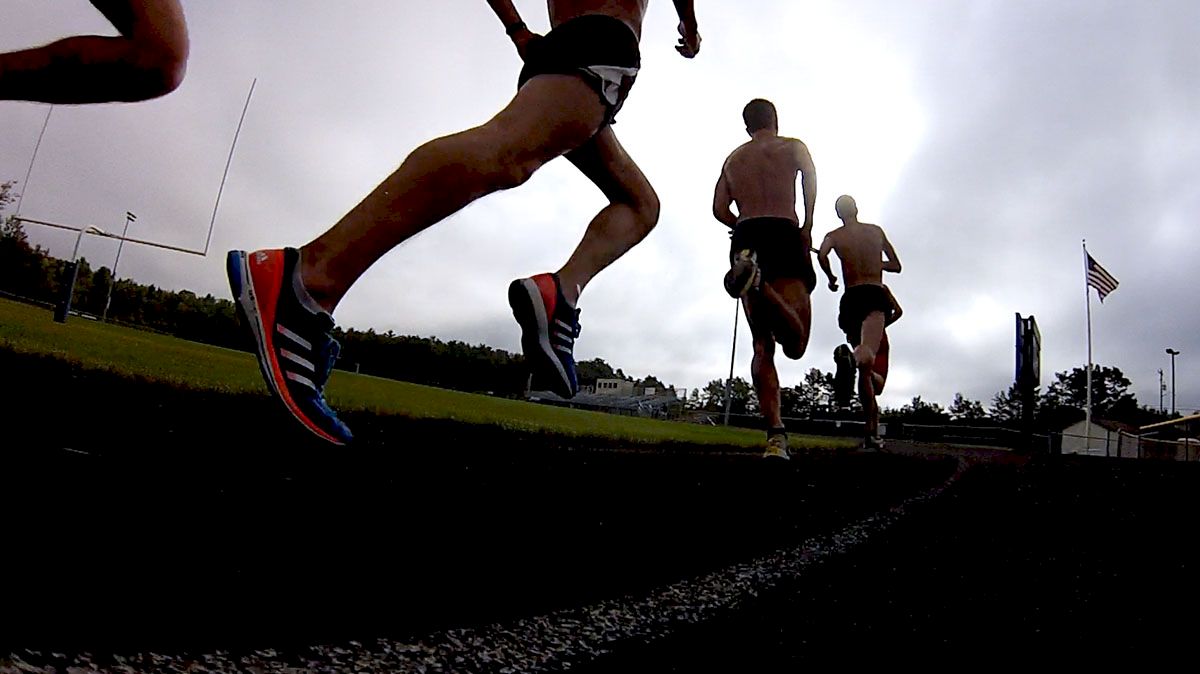What's to See in D3: Times and their counter intuitive response to the recession
What's to See in D3: Times and their counter intuitive response to the recession

In the limited formal journalism education I have (a few classes in high school), I was always taught that the first few sentences in an article should answer the important questions everyone could have given the headline....the Who, What, Where, When, Why and How. However given that I am considered by FloTrack to be a columnist, I felt it more important to begin with a brief explanation about the absence of my article from the site on Mondays when most of you were used to reading it.
I struggled with how to go about writing an article on track, because simply posting marks that could be read elsewhere adds very little and is for lack of a better term boring. I considered interviews and still will but after a few fell through I backed away from this approach as well. Then came the travel, I have filmed/covered meets from State College, PA to Boston, MA to Derwood, MD and writing an article sunday evenings became a difficult task. So now I will be looking to put out my article on Wednesdays giving me an opportunity to choose an athlete of the week to interview, rotating between the sprints, jumps, throws and distance events and to make things more interesting than just listing times I will be looking to do a commentary each week as well...we'll see how it all works out. Now for this week's article...
As many of you have certainly noticed the world is in the midst of an economic crisis and while banks, auto makers and others receive bailouts and national media attention the sport of track and field is not immune. Some may have read about the downsizing being done by Reebok one of our sports major "players," but outside of the professional ranks and big corporations the collegiate system has and will continue to feel the effects of this crisis.
You know its bad when a school like Stanford with the third largest endowment of any university in 2008 and one of the largest athletics programs in the country proposes to terminate sports teams (not running ones) in an effort to save funds. This is a trend that more than likely will continue and trickle down through divisions as many other schools have seen their endowments greatly reduced. My alma-mater lost roughly 25% of its endowment and as a result has put the golf program and the swimming and diving teams into a steady state of nervousness.
Although I am not aware of any running teams in D3 that have been eliminated or threatened as a result of current budget crunches, that does not mean teams throughout the division have not felt effects in other way, perhaps through limited rosters, limited schedules and especially reduced travel.
Enter the rise of the formerly small local track meets, these are the meets that are held on the many 200 meter or smaller flat tracks throughout the country that used to only have maybe four or five teams that this year ballooned to over ten as programs looked to stay closer to home. These smaller meets that used to welcome open athletes with outstretched arms because of the added competition and their $10 entry fees no longer had the excess room in their heats.
So how is it that with less travel we are seeing across all divisions one of the best years in recent memory as far as indoor performances and what does it mean for parity in the sport when some teams remain able to travel to meets at BU, Washington, Notre Dame, and others remain at smaller venues spread across the country.
In D1 we are witnessing a remarkable year that looks like it will take an auto qualifier to make either the men's mile or 3k, and while D3 looks to still have room for provisional qualifiers the marks set this season have been some of the most impressive depth wise in recent memory. While a number of the top times have taken place on flat 200 meter tracks or oversized tracks that do not receive the fanfare of Washington or Notre Dame, there are still a large number of times being produced at the "mega-meets" from teams that have had to travel quite a way.
Perhaps its the 300 miles from Oshkosh, WI to Aimes, Iowa or the staggering 1100 miles from Atlanta to Boston, some teams are still willing and more importantly able to make the drive to bigger meets, in order to produce impressive times. With budget crunches at our colleges and universities only beginning, how long is it before gap between our wealthier institutions and smaller ones are truly noticed. Recruiting, travel, schedules, rosters these are all things that can and will be effected and while it may not show this year, as a result times, heights, distances will suffer.
Is this the catalyst that was needed to push forward the previously proposed legislation for Division 4?
Related Content
 Replay: Cougar Challenge | Sep 28 @ 9 AM
Replay: Cougar Challenge | Sep 28 @ 9 AMSep 28, 2024
 BYU's Berkley Nance, Lucas Bons Run 1-2 In B Race At Nuttycombe
BYU's Berkley Nance, Lucas Bons Run 1-2 In B Race At NuttycombeSep 28, 2024
 Penn State's Florence Caron Improves From 133rd In 2023 To Second in 2024 At Nuttycombe
Penn State's Florence Caron Improves From 133rd In 2023 To Second in 2024 At NuttycombeSep 28, 2024
 Casey Clinger Takes Fourth At Nuttycombe Invitational 2024, Leads BYU To Men's Team Title
Casey Clinger Takes Fourth At Nuttycombe Invitational 2024, Leads BYU To Men's Team TitleSep 28, 2024
 Ed Eyestone Pleased With BYU's Men Team Title Win At Nuttycombe
Ed Eyestone Pleased With BYU's Men Team Title Win At NuttycombeSep 28, 2024
 Parker Wolfe Sets Men's 8k Course RECORD To Win Nuttycombe
Parker Wolfe Sets Men's 8k Course RECORD To Win NuttycombeSep 28, 2024
 Berlin Marathon 2024 Entry List
Berlin Marathon 2024 Entry ListSep 28, 2024
 Parker Wolfe, BYU Make Statements At Nuttycombe Invitational
Parker Wolfe, BYU Make Statements At Nuttycombe InvitationalSep 27, 2024
 Faith Kipyegon, Marileidy Paulino Steal The Show At Athlos NYC
Faith Kipyegon, Marileidy Paulino Steal The Show At Athlos NYCSep 27, 2024